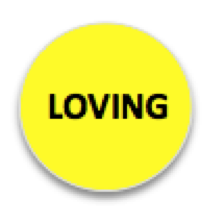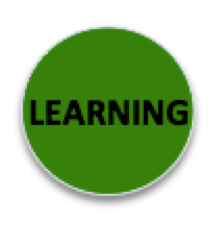Valentine’s Day, the holiday of love and romance in the United States (and many other countries in the world) is just around the corner. This month, we’re going against the grain, and encouraging you to use your brain, and not your heart, to be more successful as you navigate differences in cultures, languages, careers, and yes, even relationships.
Think of your brain processing information like a traffic light:

The Safety Zone
What is it? It’s the part of the brain that constantly scans the environment for danger and threats. Millions of years ago this danger took the form of lions or tigers, while today it is more likely an overflowing inbox of emails, an overseas business deal fraught with cultural differences, a partner who does things differently, or simply the stress of getting it all done.
The good: These “fight or flight” instincts bring us back to “safety” when we’re truly in harm’s way.
The bad: For many of us, anything new or different in our environments today unknowingly sets off our old “fight or flight” instincts.
What happens here: We do what’s necessary to get by, but we’re not at our best because we revert to rigid and unconscious behaviors and patterns. We tend to lose our self-awareness, blame others, and become stuck in a particular mindset. We’re basically at a standstill, similar to being stopped at a red light.
The Loving Zone
What is it? It’s the brain systems that allow us to tap into our emotions, memories, and desires. We hold our values here and as a result make judgments about people and experiences, often classifying them into good or bad, right or wrong, agreeable or disagreeable.
The good: It’s where we show our uniquely human ability to feel empathy for those around us.
The bad: For better or worse, emotional factors and beliefs can cloud or even drive our decision-making process.
What happens here: Just like we slow down at a yellow light, our brain’s perception of choice significantly decreases and its impulse to judge significantly increases when we’re analyzing a situation through this lens. We tend to lose sight of the bigger picture.
The Learning Zone
What is it? It’s the neocortex part of the brain where we can access a center of infinite learning.
The good: We forget all the rules of the road, and cruise into the highest states of self-awareness and control over our choices. The more we can work to make the unfamiliar familiar, the more comfortable our brains can be engaging at this level.
The bad: It’s impossible to access this part of the brain all the time.
What happens here: We can override both survival and emotional instincts, and make logic-based decisions to intentionally change behaviors and habits, create connections, and build trust. For example, a Japanese woman working in the US who habitually makes intermittent eye contact with colleagues makes a conscious decision to focus on steadier eye contact in the workplace. She knows eye contact is valued in American culture and wants to strengthen her communication skills. She creates a “trigger” to remind her of its importance, such as a picture of a set of eyes that she keeps in her notebook and on her desk. Over time she is able to train her mind to “learn” a new behavior and as a result, she becomes more effective.
Rules of the Road
Just like a traffic light is always changing, so too is the area of the brain that we are able to access. While a road full of green traffic lights would be ideal, it’s not realistic. Even under the best of driving conditions, occasionally we have to slow down or come to a stop.
So at this time of year, when so many of us are focusing on our hearts, we challenge you to refocus on your brain. One simple way to do this is to ask yourself the following: Am I being reactive or responsive in my approach to changes around me? If you’re being reactive, chances are you are in the safety or loving zones. If you’re being responsive, there’s a good likelihood that you’re in the learning area, and that’s exactly where you want to be. Even on Valentine’s Day. ♥















